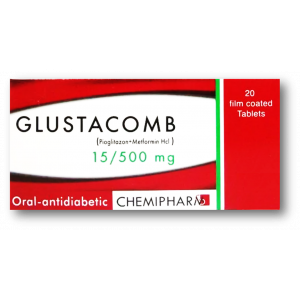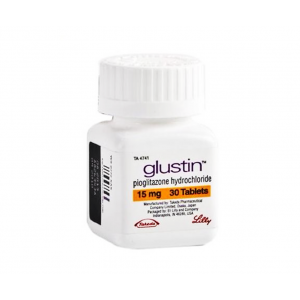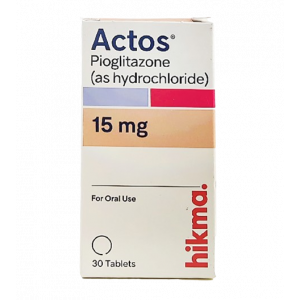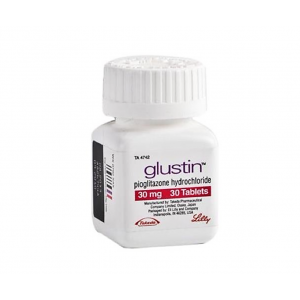- Anti-hestaminic & Respiratory Drugs (20)
- Anti-inflammatory Drugs (192) +-
- Baby & Mom (1322) +-
- Baby & Mom > Bath, skin & Hair > Skin Care > wibes (52)
- Beauty (3032) +-
- Beauty > Skin Care > whitening (304)
- Chemotherapy & Immune Response (883) +-
- Chemotherapy & Immune Response > ANTI-FUNGAL (11)
- Chemotherapy & Immune Response > Chemotherapeutic Agents > Hormone Antagonists >Enzyme Inhibitors (289)
- CIRCULATORY DISTURBANCE AGENTS (24)
- Diet & Fitness Products (284) +-
- DRUG AFFECTING CENTRAL NERVOUS SYSTEM (191)
- HEMATOLOGY (39)
-
Medical Supplies (503)
+-
- Chemicals & Disinfectants (19)
- Dental Supplies (31)
- Devices & Instruments (10)
- Diabetic Supplies (121)
- General Medical Supplies (21)
- I.V & Medical Solution (0)
- Intensive Care Unit & Anesthesia Supplies (0)
- KIDNEY UNIT SUPPLIES (21)
- Lab Supplies (3)
- Miscellaneous (21)
- Neonatal Unit Supplies (0)
- Operation Room Supplies (2)
- Sanitary (5)
- Sterilization Supplies (0)
- Surgical Sutures (4)
- Syringes (3)
-
Medicines & Health (2675)
+-
- Allergy & Sinus (95)
- Children's Health Care (54)
- Cough, Cold & Flu (277)
- Digestive Health & Nausea (229)
- Ear, Nose & Throat Care (179)
- Eye Care (123)
- Feminine Care (325)
- Foot Care (9)
- Orthopaedic Appliances (0)
- Pain Relief & Management (238)
- Pill Organizer (2)
- Skin Treatments (833)
- Sleep & Snoring Aids (2)
- Support & Braces (8)
- Medicines & health > Gout releif (42)
- Natural & Organic Products (81) +-
- OTC > Analgesics > Anti-inflammatory Drugs (44)
-
Personal Care (3266)
+-
- Bath & Body (271)
- Deodorant & Anti-perspirants (190)
- Ear, Nose & Throat Care (175)
- Eye Care (130)
- Feminine Care (374)
- Foot Care (17)
- Hair Care (473)
- Home Tests & Monitorings (14)
- Incontinence (7)
- Lip Care (22)
- Massage & Relaxation (17)
- Natural & Organic Personal Care (7)
- Oral Care (88)
- Pregnancy & Fertility (65)
- Shaving & Grooming (65)
- Sun Care (79)
-
Prescription Drugs (2903)
+-
- Analgesics (181)
- Cardiovascular System (374)
- Drugs Affecting Musculoskeletal System (65)
- Drugs Used In Infections (56)
- Ear & Nose Drugs (2)
- Endocrine System (176)
- Gastrointestinal Tract (242)
- Gastrointestinal Tract > Hepatology > Liver treatment (61)
- GYNECOLOGY (2)
- Miscellaneous (11)
- NEPHROLOGY > URINARY SYSTEM > RENAL DISORDERS > URINARY TRACT DISORDERS (46)
- NEUROLOGY (223)
- Nutrients & Blood Electrolytes (2)
- Respiratory System (154)
- SKIN > NAILS > HAIR > TOPICAL PREPARATIONS (96)
- Vaccines (1)
- Prescription drugs > Cardiovascular system > Anti-hypertension drugs (242)
- Sexual Wellness (301) +-
- Vitamins & Minerals Supplements (1212) +-
Ex Tax: 372EGP
Example
You can return the product within 14 days of purchase.
ReturnsYou can return the product within 14 days of purchase.

--Brand Name--
US Brand Name: Actos
--Description--
Pioglitazone is used with proper diet and exercise to treat high blood sugar levels caused by type 2 diabetes. It may be used alone or with other medicines such as insulin, metformin, or sulfonylurea agents. Pioglitazone works by helping your body use insulin better. This medicine does not help patients who have insulin-dependent or type 1 diabetes.
This medicine is available only with your doctor's prescription.
This product is available in the following dosage forms: Tablet
--Before Using--
In deciding to use a medicine, the risks of taking the medicine must be weighed against the good it will do. This is a decision you and your doctor will make. For this medicine, the following should be considered:
Allergies
Tell your doctor if you have ever had any unusual or allergic reaction to this medicine or any other medicines. Also tell your health care professional if you have any other types of allergies, such as to foods, dyes, preservatives, or animals. For non-prescription products, read the label or package ingredients carefully.
Pediatric
Appropriate studies have not been performed on the relationship of age to the effects of pioglitazone in the pediatric population. Safety and efficacy have not been established.
Geriatric
Appropriate studies performed to date have not demonstrated geriatric-specific problems that would limit the usefulness of pioglitazone in the elderly. However, elderly patients are more likely to have age-related heart disease, which may require an adjustment in the dose for patients receiving pioglitazone.
Breastfeeding
There are no adequate studies in women for determining infant risk when using this medication during breastfeeding. Weigh the potential benefits against the potential risks before taking this medication while breastfeeding.
Drug Interactions
Although certain medicines should not be used together at all, in other cases two different medicines may be used together even if an interaction might occur. In these cases, your doctor may want to change the dose, or other precautions may be necessary. When you are taking this medicine, it is especially important that your healthcare professional know if you are taking any of the medicines listed below. The following interactions have been selected on the basis of their potential significance and are not necessarily all-inclusive.
Using this medicine with any of the following medicines is not recommended. Your doctor may decide not to treat you with this medication or change some of the other medicines you take.
- Ranolazine
Using this medicine with any of the following medicines is usually not recommended, but may be required in some cases. If both medicines are prescribed together, your doctor may change the dose or how often you use one or both of the medicines.
- Abiraterone Acetate
- Abiraterone Acetate, Micronized
- Acarbose
- Amlodipine
- Atogepant
- Cannabidiol
- Carbamazepine
- Cariprazine
- Chloroquine
- Chlorothiazide
- Chlorpropamide
- Chlorthalidone
- Ciprofloxacin
- Delafloxacin
- Enoxacin
- Furosemide
- Gatifloxacin
- Gemfibrozil
- Gemifloxacin
- Glimepiride
- Glipizide
- Glyburide
- Grepafloxacin
- Hydrochlorothiazide
- Hydroflumethiazide
- Hydroxychloroquine
- Ifosfamide
- Indapamide
- Insulin
- Insulin Aspart, Recombinant
- Insulin Bovine
- Insulin Degludec
- Insulin Detemir
- Insulin Glargine, Recombinant
- Insulin Glulisine
- Insulin Lispro, Recombinant
- Ivosidenib
- Lanreotide Acetate
- Levofloxacin
- Lomefloxacin
- Metformin
- Metolazone
- Moxifloxacin
- Nateglinide
- Nifedipine
- Norfloxacin
- Octreotide Acetate
- Ofloxacin
- Omaveloxolone
- Pasireotide Diaspartate
- Phenobarbital
- Piperaquine
- Pixantrone
- Polythiazide
- Primidone
- Repaglinide
- Rifampin
- Somatrogon-ghla
- Sparfloxacin
- Thioctic Acid
- Tolazamide
- Tolbutamide
- Tolvaptan
- Topiramate
- Triamterene
- Trovafloxacin
- Voriconazole
- Warfarin
Using this medicine with any of the following medicines may cause an increased risk of certain side effects, but using both drugs may be the best treatment for you. If both medicines are prescribed together, your doctor may change the dose or how often you use one or both of the medicines.
- Acebutolol
- Atenolol
- Atorvastatin
- Betaxolol
- Bisoprolol
- Bitter Melon
- Carteolol
- Carvedilol
- Celiprolol
- Clopidogrel
- Esmolol
- Fenugreek
- Glecaprevir
- Glucomannan
- Guar Gum
- Ketoconazole
- Labetalol
- Levobunolol
- Metipranolol
- Metoprolol
- Nadolol
- Nebivolol
- Nilotinib
- Oxprenolol
- Penbutolol
- Pibrentasvir
- Pindolol
- Practolol
- Propranolol
- Psyllium
- Sotalol
- Timolol
Other Interactions
Certain medicines should not be used at or around the time of eating food or eating certain types of food since interactions may occur. Using alcohol or tobacco with certain medicines may also cause interactions to occur. Discuss with your healthcare professional the use of your medicine with food, alcohol, or tobacco.
Other Medical Problems
The presence of other medical problems may affect the use of this medicine. Make sure you tell your doctor if you have any other medical problems, especially:
- Bladder cancer, active or
- Diabetic ketoacidosis (high ketones and acid in the blood) or
- Heart failure, severe or
- Type I diabetes—Should not be used in patients with these conditions.
- Diabetic macular edema (swelling of the back of the eye) or
- Edema (fluid retention or swelling) or
- Heart disease or
- Liver disease—Use with caution. May make these conditions worse.
- Fever or
- Infection or
- Surgery or
- Trauma—Use with caution. These conditions may cause problems with blood sugar control.
--Proper Use--
Carefully follow the special diet your doctor gave you. This is the most important part of controlling your diabetes and will help the medicine work properly. Exercise regularly and test for sugar in your blood or urine as directed.
This medicine should come with a Medication Guide. Read and follow these instructions carefully. Ask your doctor if you have any questions.
The tablets may be taken with or without food.
Dosing
The dose of this medicine will be different for different patients. Follow your doctor's orders or the directions on the label. The following information includes only the average doses of this medicine. If your dose is different, do not change it unless your doctor tells you to do so.
The amount of medicine that you take depends on the strength of the medicine. Also, the number of doses you take each day, the time allowed between doses, and the length of time you take the medicine depend on the medical problem for which you are using the medicine.
For oral dosage form (tablets):
►For type 2 diabetes:
- Adults—At first, 15 or 30 milligrams (mg) once a day. Your doctor may adjust your dose as needed. However, the dose is usually not more than 45 mg once a day.
- Children—Use and dose must be determined by your doctor.
Missed Dose
If you miss a dose of this medicine, take it as soon as possible. However, if it is almost time for your next dose, skip the missed dose and go back to your regular dosing schedule. Do not double doses.
Storage
Store the medicine in a closed container at room temperature, away from heat, moisture, and direct light. Keep from freezing.
Keep out of the reach of children.
Do not keep outdated medicine or medicine no longer needed.
Ask your healthcare professional how you should dispose of any medicine you do not use.
--Precautions--
It is very important that your doctor check your progress at regular visits to make sure that this medicine is working properly and to decide if you should continue to use it. Blood and urine tests may be needed to check for unwanted effects.
This medicine may cause some women who do not have regular monthly periods to ovulate. This can increase the chance of pregnancy. If you are a woman of childbearing potential, you should discuss birth control options with your doctor.
If you are rapidly gaining weight, having shortness of breath, chest pain or discomfort, extreme tiredness or weakness, irregular breathing, irregular heartbeat, or excessive swelling of the hands, wrist, ankles, or feet, check with your doctor immediately. These may be symptoms of a serious heart problem.
If you have abdominal or stomach pain, dark urine, a loss of appetite, nausea or vomiting, unusual tiredness or weakness, or yellow eyes or skin, check with your doctor right away. These may be symptoms of a serious liver problem.
Check with your doctor right away if blurred vision, decreased vision, or any other change in vision occurs while you are taking this medicine. Your doctor may want you to have your eyes checked by an ophthalmologist (eye doctor).
This medicine may increase the risk for bone fractures in women. Ask your doctor about ways to keep your bones strong to help prevent fractures.
This medicine may increase your risk for bladder cancer if you take it for more than 12 months. Tell your doctor right away if you have blood in the urine, a frequent, strong, or increased urge to urinate, painful urination, or pain in the back, lower abdomen, or stomach.
This medicine can cause hypoglycemia (low blood sugar). However, low blood sugar can occur if you delay or miss a meal or snack, exercise more than usual, drink alcohol, cannot eat because of nausea or vomiting, or take certain medicines. Low blood sugar must be treated before it causes you to pass out (unconsciousness). People feel different symptoms of low blood sugar. It is important that you learn which symptoms you have in order to treat it quickly. Talk to your doctor about the best way to treat low blood sugar.
Hyperglycemia (high blood sugar) may occur if you do not take enough or skip a dose of your medicine, overeat or do not follow your meal plan, have a fever or infection, or do not exercise as much as usual. High blood sugar can be very serious and must be treated right away. It is important that you learn which symptoms you have in order to treat it quickly. Talk to your doctor about the best way to treat high blood sugar.
There may be a time when you need emergency help for a problem caused by your diabetes. You need to be prepared for these emergencies. It is a good idea to wear a medical identification (ID) bracelet or neck chain at all times. Also, carry an ID card in your wallet or purse that says you have diabetes with a list of all your medicines.
Do not take other medicines unless they have been discussed with your doctor. This includes prescription or nonprescription (over-the-counter [OTC]) medicines and herbal or vitamin supplements.
--Side Effects--
Along with its needed effects, a medicine may cause some unwanted effects. Although not all of these side effects may occur, if they do occur they may need medical attention.
Check with your doctor immediately if any of the following side effects occur:
More common
- Chest pain
- decreased urine output
- dilated neck veins
- extreme fatigue
- irregular breathing
- irregular heartbeat
- problems with teeth
- swelling of the face, fingers, feet, or lower legs
- tightness in the chest
- trouble breathing
- weight gain
Less common
- Pain or swelling in the arms or legs without an injury
- pale skin
- swelling
- trouble with breathing when active
- unusual bleeding or bruising
- unusual tiredness or weakness
Incidence not known
- Dark urine
- loss of appetite
- nausea or vomiting
- stomach pain
- unexplained, rapid weight gain
- yellow eyes or skin
Some side effects may occur that usually do not need medical attention. These side effects may go away during treatment as your body adjusts to the medicine. Also, your health care professional may be able to tell you about ways to prevent or reduce some of these side effects. Check with your health care professional if any of the following side effects continue or are bothersome or if you have any questions about them:
More common
- Blurred vision or other changes in vision
- cough
- dry mouth
- flushed, dry skin
- fruit-like breath odor
- headache
- increased hunger
- increased thirst
- increased urination
- loss of consciousness
- muscle pain or soreness
- problems with your teeth
- runny or stuffy nose
- sore throat
- stomachache
- sweating
- unexplained weight loss
Other side effects not listed may also occur in some patients. If you notice any other effects, check with your healthcare professional.
Call your doctor for medical advice about side effects. You may report side effects to the FDA at 1-800-FDA-1088.
Write a review
Your Name:Your Review: Note: HTML is not translated!
Rating: Bad Good
Enter the code in the box below:









